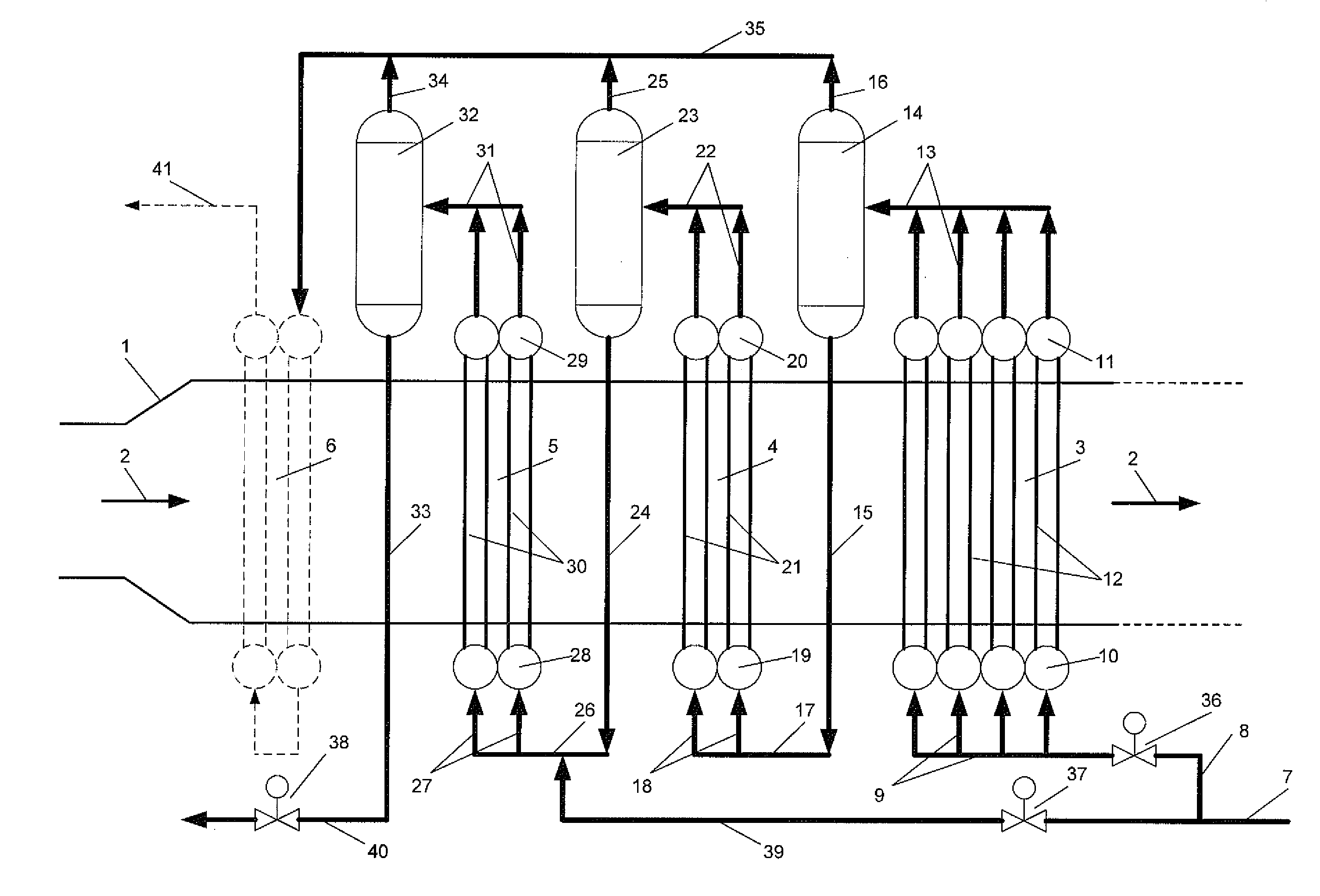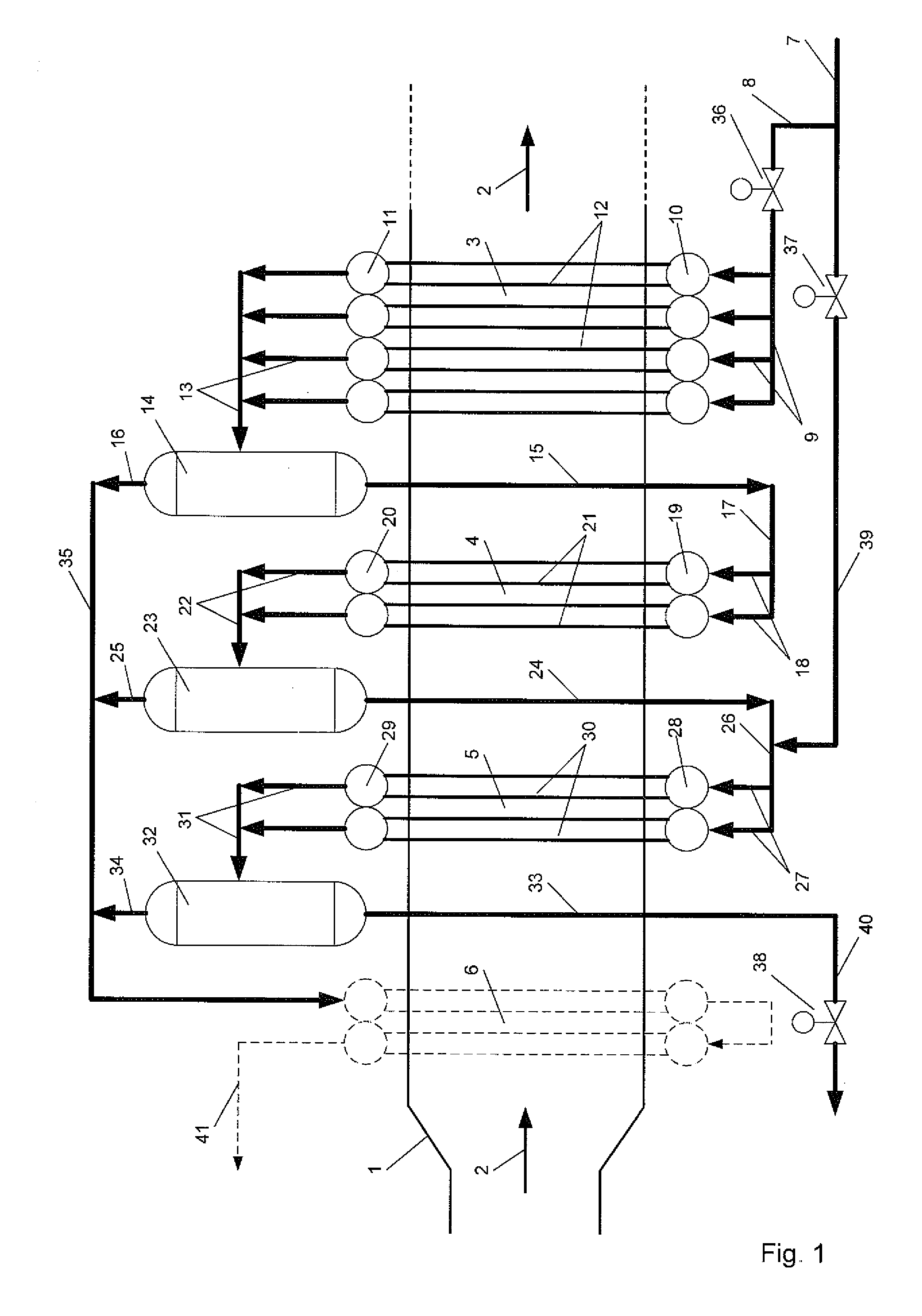Cascading once through evaporator
a technology of evaporator and evaporator chamber, which is applied in the direction of steam generation using hot heat carriers, steam separation arrangements, lighting and heating apparatus, etc. it can solve the problems of insufficient supply of liquid, insufficient steam generation of more back positioned heat transfer tubes, and inability to generate enough steam, etc., to achieve simple configuration and less susceptible to overheating and/or failure of components
- Summary
- Abstract
- Description
- Claims
- Application Information
AI Technical Summary
Benefits of technology
Problems solved by technology
Method used
Image
Examples
Embodiment Construction
[0046]FIG. 1 shows a diagrammatic representation of a steam generator according to the invention. The steam generator of this embodiment comprises a first, second and third evaporator stage 3, 4 and 5 positioned in cascade in a substantially horizontal gas conduit 1. A heating gas indicated by arrows 2 flows through the gas conduit 1 in a length direction. The first evaporator stage 3 is positioned most downstream the gas flow. A flow medium is supplied by one or more main supply conduits 7. Via one or more first inlet conduits 8, distributing manifolds 9 and distributing headers 10, the flow medium is supplied and distributed to a first heat transfer section 12 of the first evaporator stage 3, which at least partially extend within the gas conduit 1.
[0047]First inlet conduit 8 comprises a control valve 36 to control the flow rate of the flow medium to the first heat transfer section 12 of the first evaporator stage 3.
[0048]The flow medium enters the first heat transfer section 12 i...
PUM
 Login to View More
Login to View More Abstract
Description
Claims
Application Information
 Login to View More
Login to View More - R&D
- Intellectual Property
- Life Sciences
- Materials
- Tech Scout
- Unparalleled Data Quality
- Higher Quality Content
- 60% Fewer Hallucinations
Browse by: Latest US Patents, China's latest patents, Technical Efficacy Thesaurus, Application Domain, Technology Topic, Popular Technical Reports.
© 2025 PatSnap. All rights reserved.Legal|Privacy policy|Modern Slavery Act Transparency Statement|Sitemap|About US| Contact US: help@patsnap.com


